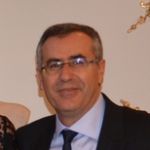iCUBE-MAPECV Research Infrastructures
- Synthesis of material
- Realization of devices (diodes, transistors, memories, solar cells)
- Characterization and modeling
Technical Info
MAIN FEATURES :
The MaCEPV team activities are divided into three themes with quite strong interactions among them, namely:
T1. Advanced inorganic materials for photovoltaics
T2. Organic materials and devices for electronics, photovoltaics and sensors
T3. Ion beam and photon assisted materials and processes
The MaCEPV research activities ranges from the synthesis of material, to realization of devices (diodes, transistors, memories, solar cells), to their characterization and modeling, Indoor Performance measurements)
More specifically, the investigations concern:
- the development of innovative processes for wafer based silicon solar cells (multicrystalline, ribbon)
- the formation and characterization of ultrathin film silicon solar cells on foreign substrates,
- the synthesis and characterization of oxide/nitride based nanostructured materials for optoelectronics,
- the optimization of transistors and organic solar cells,
- the modification/synthesis of new materials by ion beams for the development of innovative electronic components,
- the development of models and simulation tools to study the charge transport in photovoltaic and electronic components.
The MaCEPV team owns advanced infrastructures such as two technological platforms (clean room, glove box), unique facilities for the synthesis of materials (ion implanters, lasers, CVD, sputtering), for structural analysis (RBS, ERDA, Raman ...) and for optoelectronic investigations (photoluminescence, spectral response, ...) in addition to setups for the analysis of devices. The Modeling activities rely on computers and simulation tools developed in-house or commercial software (Monte-Carlo, scripts, COMSOL Multiphysics, ...).
LIMITATIONS OR CONSTRAINTS :
- The access will be allowed with technical and scientific assistance from iCube-MaCEPV pesonnel
TYPICAL SERVICES OR RESULTS
See http://icube-macepv.unistra.fr/en/index.php/Research_facilities
Participation to Research Projects
- The MaCEPV team is involved in numerous national (ANR, AMI...) and European projects (INTERREG, FP7, ANR-BIFASOL ; AMI-DEMOS, EUROGIA-LAPSIS) as well as in international collaborations (Kazakhstan, Belarus, Turkey ...).
Links
Equipment & Instruments
PV Technologies
PV RTD Tags
Contacts
Address
ICube UMR 7357 - Engineering science, computer science and imaging laboratory
D-ESSP department - MaCEPV team | 23, rue du Loess - BP 20 CR | 67037 | STRASBOURG Cedex 2 - France -
Main contact
 SLAOUI Abdelilah
SLAOUI Abdelilah



